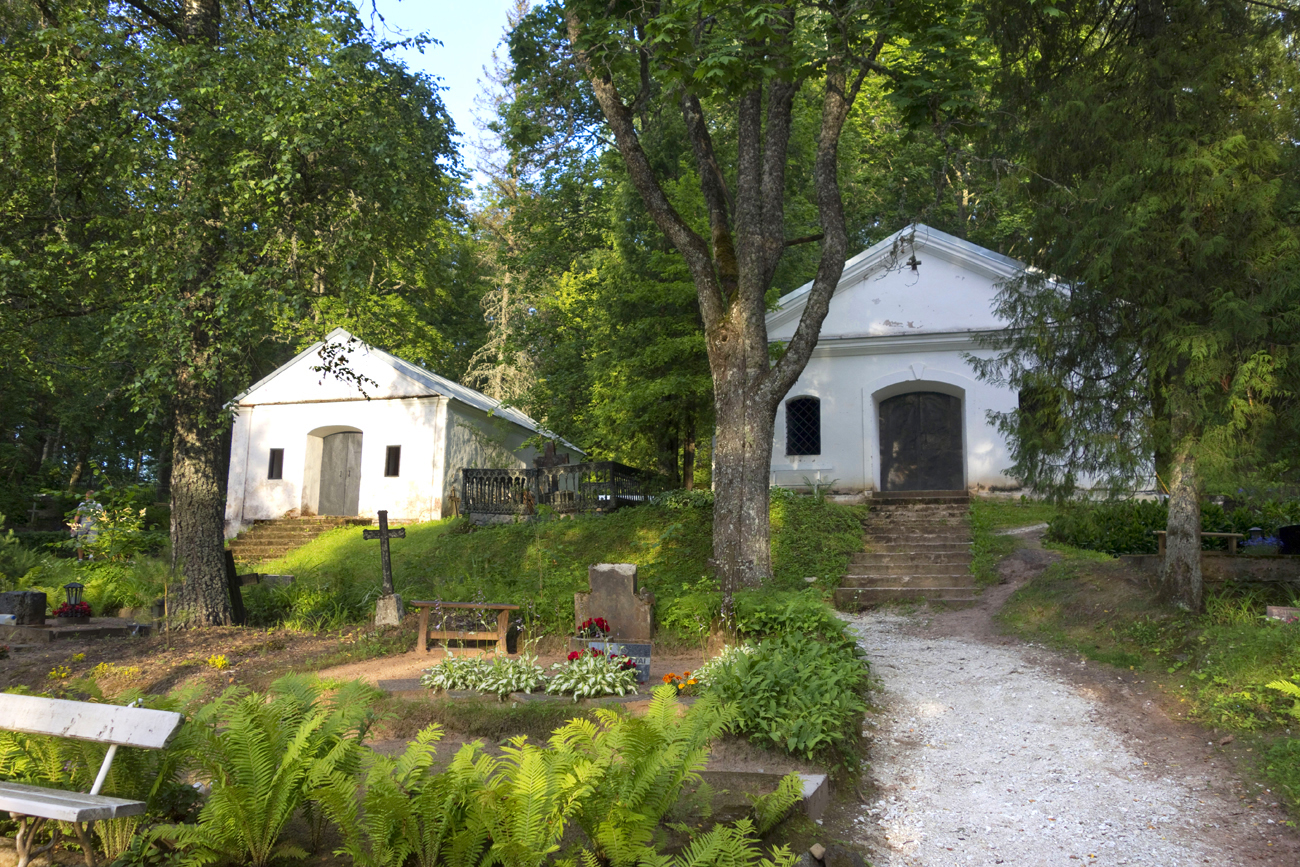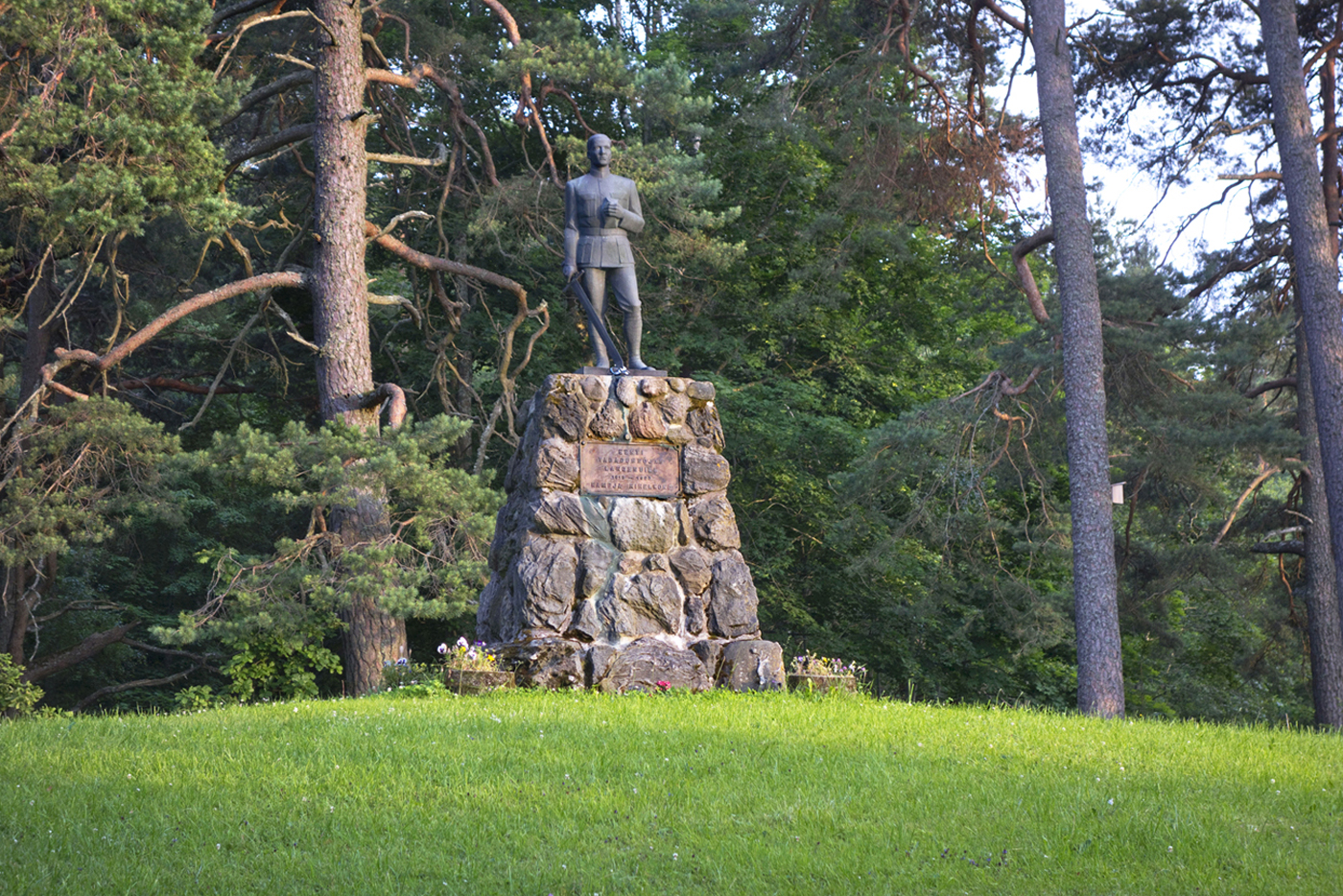St Martin’s Church in Kambja
.jpg)
Very little is known about the earlier history of Kambja. We do not even know to whom the church was consecrated: mention has been made of St Mary and St Martin. In any case the Kambja parish does not go back to ancient history. Documents record it first in 1471 and it has mostly been assumed that an independent parish was formed here only in the second half of the 15th century from parts of Otepää, Võnnu and Tartu parishes. On the other hand, the Kambja clergyman Borchardus de Kambie was mentioned as early as in 1330. Rural priests always operated at parish churches, so the Kambja parish could be much older than currently thought.
Time and wars did their work and data about the earlier life of the church are scarce. The stone church was probably built in the second half of the 15th century. The walls of this short and wide nave constitute the western part of the present church. Renovation of the church revealed the old square chancel and remains of the vestry walls. These were unfortunately demolished by the restorers. The contours of the walls are marked on the floor of the church. Only the chancel was probably vaulted as the nave had a simple wooden ceiling.
Gradually, the church became too cramped and in 1874 large-scale extensions were under-taken. Building a church is a serious matter – archives contain no fewer than four different reconstruction projects, three from a productive master builder Johann Gottfried Mühlen-hausen. They must have seemed too dull for the congregation. A much more modern design was offered by the Tartu master Paul Schilling, who also designed the Catholic church in Tartu. The old chancel was demolished and replaced by a spacious neo-Gothic nave, joined by polygonal altar room and vestry. According to the fashion of the day, the walls were made of natural stones and bricks. Compared to the renewed church, the 18th century wooden bell tower seemed rather shabby and in 1937 a new slender west tower was erected after the design of Arnold Matteus. With the onslaught of the Soviet troops in 1944 the church caught fire and the entire interior was destroyed.
The church stood in ruin throughout the Soviet era. Restoration started in 1989 and eight years later the main work was completed. No attempt was made to recreate the pre-fire interior. The room was designed in modern forms of the time, supplemented by few Gothic elements. The church was consecrated in 2009. The Kambja St Martin’s Church is the biggest rural church in southern Estonia.



Kambja has a special place in our Swedish-era cultural history. In memory of the New Testament published in 1686 in South-Estonian language, a plaque was unveiled in the church in 1996, bearing the title page of the publication. The main translator was Andreas Virginius, Kambja pastor between 1640 and 1701. The work was finished by his son Adrian Virginius, executed by the Russians in the Great Northern War.
Between 1702 and 1744 the sexton and schoolteacher here was Ignatsi Jaak – one of the most gifted graduates of Bengt Gottfried Forselius’s seminar. He was one of the two schoolboys whom Forselius introduced to King Karl XI in Stockholm in 1686. There are memorial stoned to all of them near the church.
There is also a memorial in front of the church to an Estonian folk school, erected in 1987 (sculptor Endel Taniloo) with words of the poet Hando Runnel: Writing starts in church, / people start in books. („Punaste õhtute purpur”, 1982)
.jpg)
In 1932, Gustav Adolf, the crown prince of Sweden, visited Kambja and planted an oak tree in the churchyard. The tree is thriving.
Kaur Alttoa, 2016
KAMBJA CEMETERY
An avenue of oaks leads from the church to the ancient trees in the cemetery. The graves in this cemetery are located on a gradually rising slope, as there is hardly any even land at all. The natural conditions make it a rather peculiar cemetery, nothing like this springs to mind. The strange landform creates a special mood, and you can easily find yourself wandering around for a long time.
The old cemetery, established in 1773, is surrounded by a stone wall; it has later been expanded. The more recent part dating back to 1920 appeared behind the old one, and is called the new cemetery.

A chapel for funerals stands next to the main gates of the cemetery. The road runs straight to two small burial chapels; the one on the right belongs to Suure-Kambja manor lords, the Stackelbergs and the Knorrings. On the left is a burial chapel to the Schultz family of Reola. Further on we can see burial places of manor lords Gernhardts and the pastors Hasselblatt; next comes the grave of Michael Morgner who promoted the Moravian Church, and the family burial places of figures from the Estonian national movement Mart Mitt (1833–1912), Jüri Ottas (1885–1942) and of Arved Ruusa (1900–1992), national official and later Secretary of State of the exile government. Kambja cemetery is the last resting place of the parents of the hero of the War of Independence Julius Kuperjanov, Daniel and Liis, also of his brother August. Sculptor Erika Haggi is buried here as well.
The year 2020, when I write these lines, is the year of folk tales. I immediately remembered a tale from a few centuries ago that is alive to this day. Allegedly, a Swedish army commander was buried in Kambja cemetery, whose firm wish was to be buried together with his faithful horse.
This was done. Light rain was falling when we walked around here last May, and the totally quiet cemetery invited us to try and track down the traces of that legend. Next to the Schultz chapel we found the grave of Hans Sang, long-time pharmacist of Kambja. Apothecary Sang, medical chief of the Defence League’s Kambja voluntary military unit, was buried in 1939 with great honours. Behind the Sang burial place we come upon a forgotten one. Standing there we had a distinct feeling that this might be their final resting place – the commander and his horse.
Daila Aas and Kalle Kurg, 2020

Monument to those killed in the War of Independence in Kambja on Monument Hill
The base of the 2.5 m tall monument was laid of stones gathered by people living around Kambja from their farmlands and meadows. A bronze soldier on the monument holds in his right hand a sword that rests on the ground. The front bears a bronze plaque with the text: „TO THOSE KILLED / IN THE WAR OF INDEPENDENCE / 1918–1920 / KAMBJA PARISH”. The figure was designed by sculptor Aleksander Eller, money was raised by donations and support from the counties.
The monument was unveiled on 27 October 1929.
In 1940 the soldier was pulled down from the base. On 12 July 1942 the sculpture was reinstated, but in May1948 the monument was totally destroyed.
The new bronze soldier was made by sculptor Aivar Ennet. The monument was again unveiled on 23 July 1989.
Accommodation in Kambja:
– Kambja hotell. Võru mnt. 2f, Kambja, 62034 Tartumaa.
Contact: tel. +372 5627 1909, info@kambjahotell.ee https://www.facebook.com/kambjahotell/
